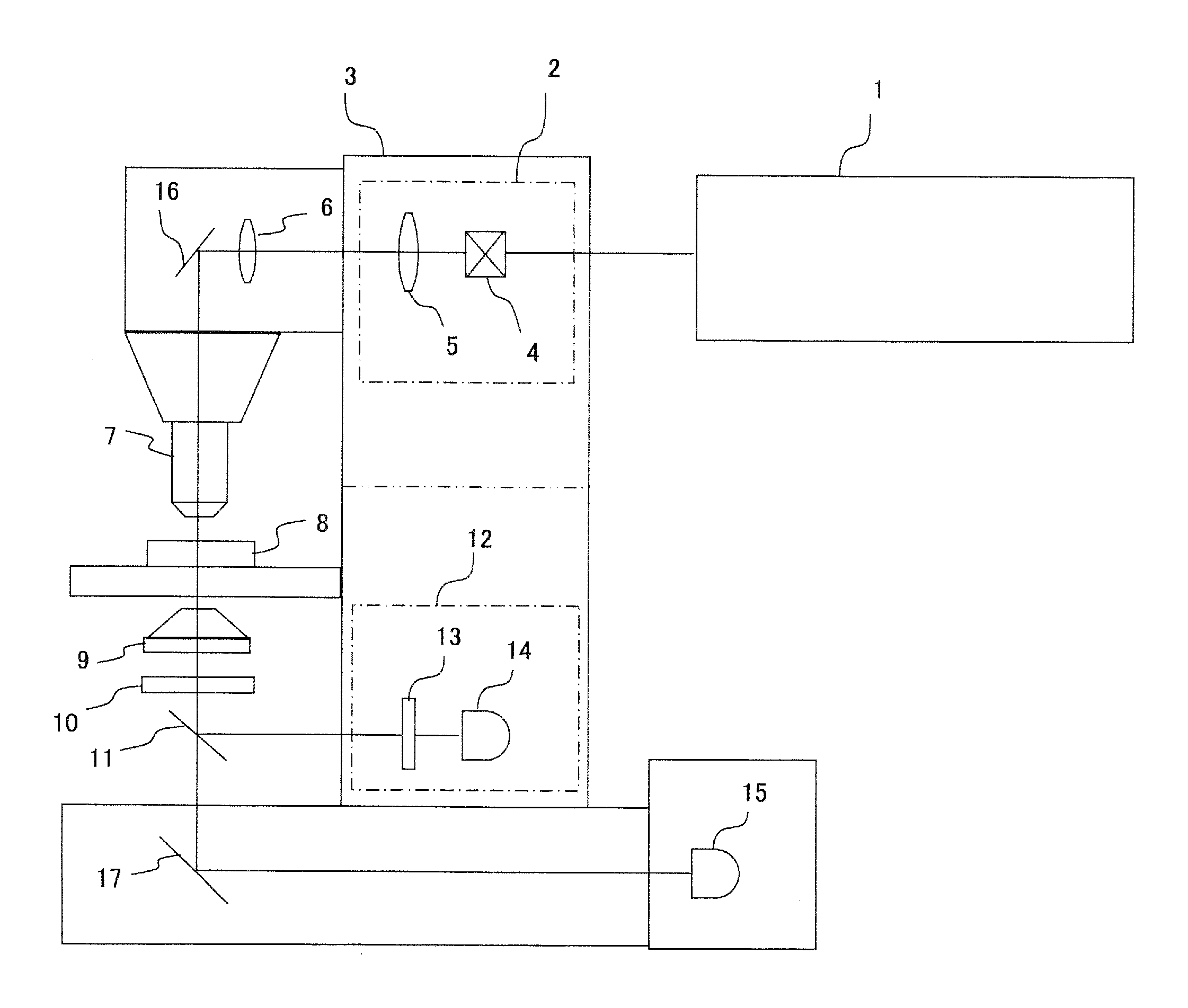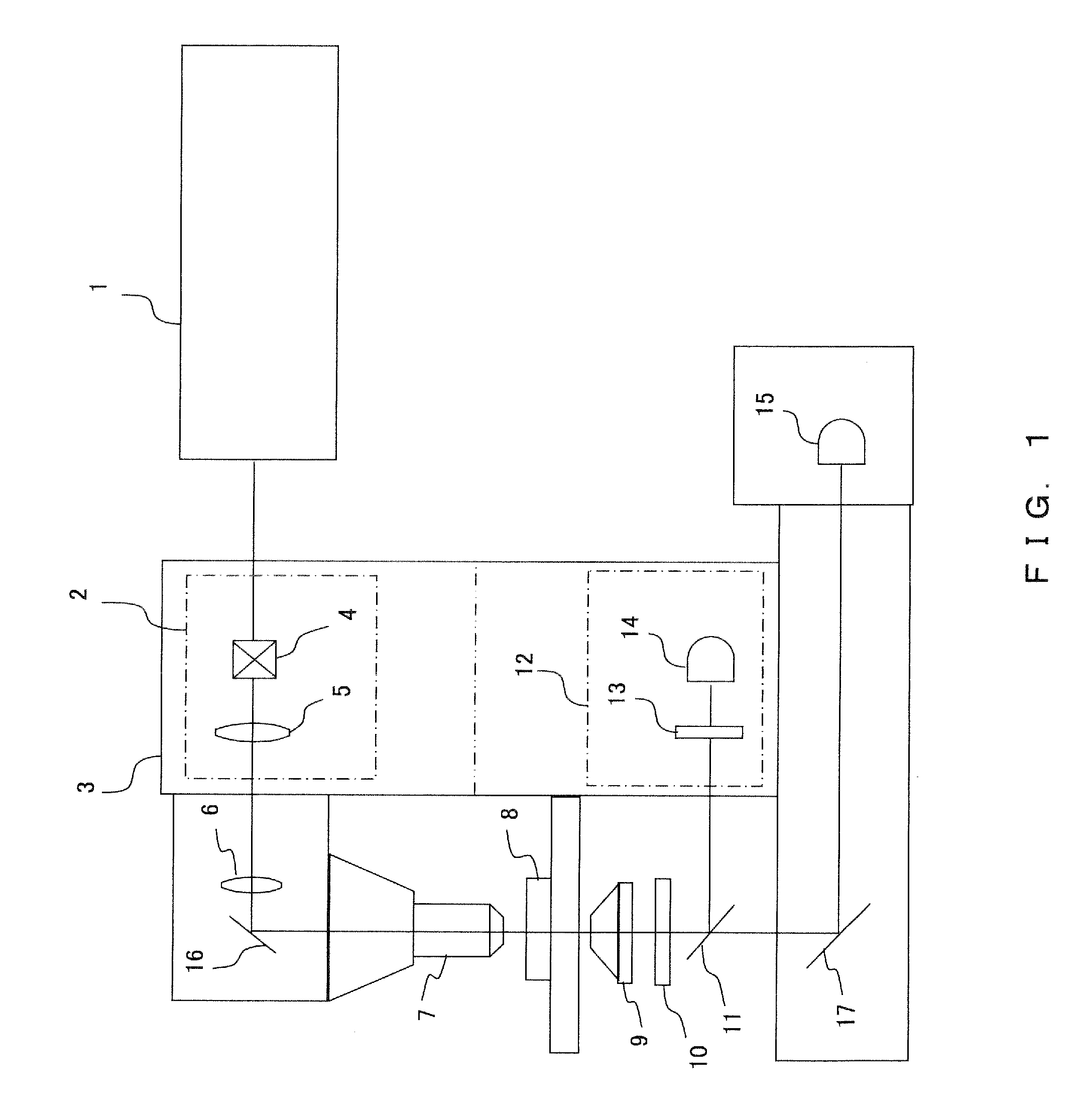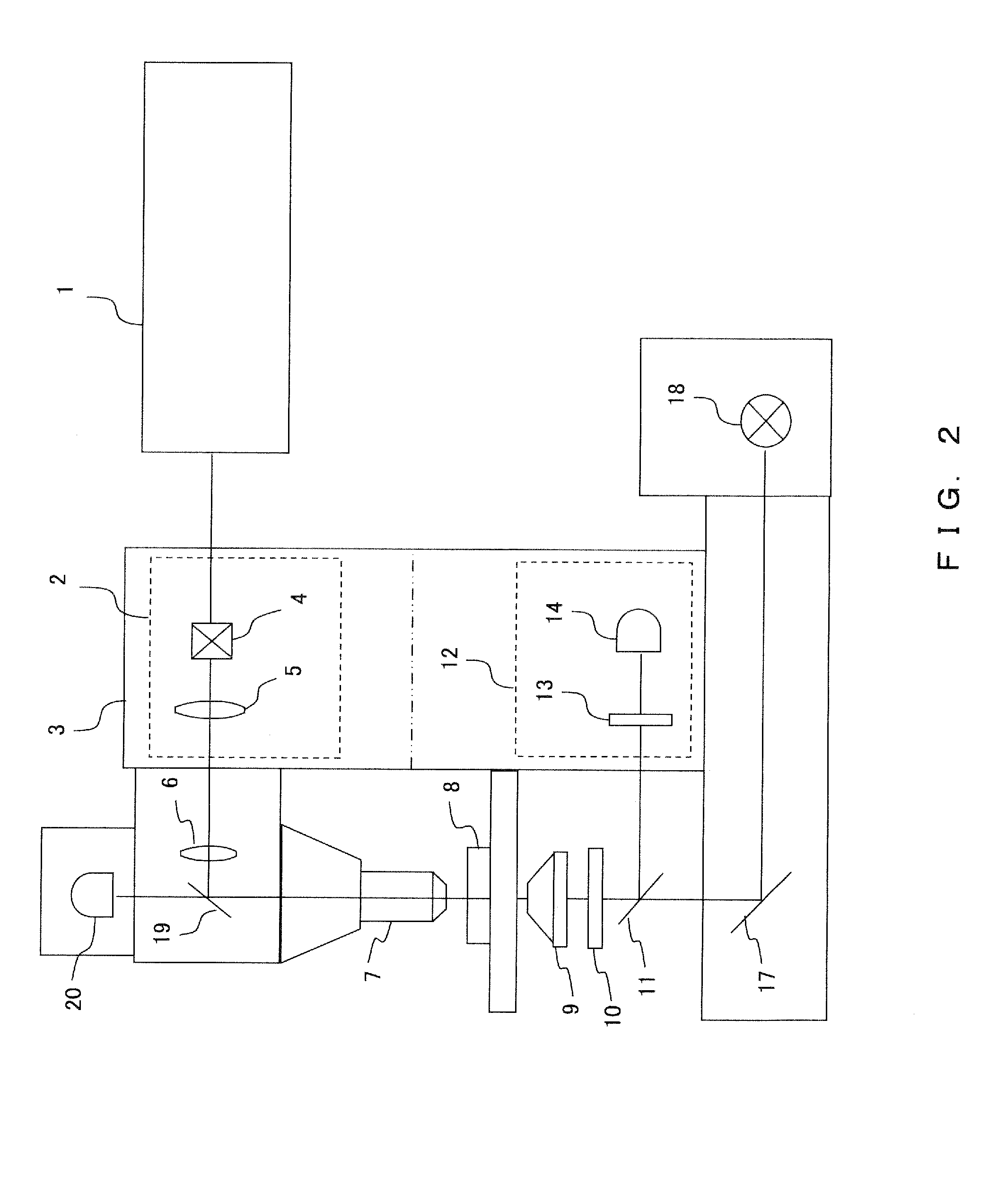Laser scanning microscope
a scanning microscope and laser technology, applied in the field of microscopes, can solve the problems of detachment of electrodes, degradation of resolution and brightness, and significant problems in specimen preparation using dic and oblique illumination
- Summary
- Abstract
- Description
- Claims
- Application Information
AI Technical Summary
Benefits of technology
Problems solved by technology
Method used
Image
Examples
embodiment 1
[0025]FIG. 1 is a schematic diagram illustrating an embodiment of a multiphoton-excitation laser scanning microscope according to the present invention. An infrared pulse laser 1 is generally used as the excitation light source in a multiphoton-excitation laser scanning microscope. One reason for using the pulse laser is that the photon density on the focal plane can be effectively increased. Since the infrared pulse laser 1 is a large apparatus, it is disposed outside the microscope, and an infrared light (excitation light) from the infrared pulse laser 1 is directed to the scanning unit 2. The configuration shown in FIG. 1 where the scanning unit 2 is built into the microscope 3 is not a limitation, and the scanning unit 2 may be disposed outside the microscope 3.
[0026]The infrared light emitted from the infrared pulse laser 1 is directed to the scan unit 2, and is deflected by scanning means 4 such as a galvano mirror disposed inside the scanning unit 2. Since the scanning means ...
embodiment 2
[0035]Hereinafter, the outline of the entire configuration of a multiphoton-excitation laser scanning microscope according to another embodiment is described referring to FIG. 2.
[0036]In the same manner as in Embodiment 1, an infrared pulse laser 1 is generally used as the excitation light source. The infrared light emitted from the infrared pulse laser 1 is directed to a scanning unit 2, passes through scanning means 4, a pupil projection lens 5, an imaging lens 6, and the like, and is irradiated on a sample 8 through an objective lens 7. In this regard, in the same manner as in Embodiment 1, the scanning unit 2 may either be built into the microscope 3 or may be disposed outside.
[0037]In the present embodiment, to detect the transmitted light as well as in Embodiment 1, the fluorescence from the sample 8 is collected by a condenser lens 9. After passing through the condenser lens 9, the fluorescence is passed through an IR partial transmission filter 10 that is disposed on the fro...
PUM
 Login to View More
Login to View More Abstract
Description
Claims
Application Information
 Login to View More
Login to View More - R&D
- Intellectual Property
- Life Sciences
- Materials
- Tech Scout
- Unparalleled Data Quality
- Higher Quality Content
- 60% Fewer Hallucinations
Browse by: Latest US Patents, China's latest patents, Technical Efficacy Thesaurus, Application Domain, Technology Topic, Popular Technical Reports.
© 2025 PatSnap. All rights reserved.Legal|Privacy policy|Modern Slavery Act Transparency Statement|Sitemap|About US| Contact US: help@patsnap.com



